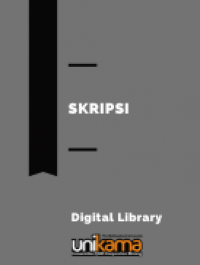
Electronic Resource
An Analysis Of Figurative Language And Imagery Used In The Avril Lavigne'S Songs Lyric
A song is one of the best forms of entertainments to enjoy. The languages or words in the song are used in a specific way, so it becomes different from the ordinary language. Songwriter tends to use variety of figurative language and imagery on the song, so that, it becomes interesting issue to analyze kind of figurative language and imagery used on Avril Lavigne’s song lyrics. This study is aimed to analyzed figurative language and imagery used on Avril Lavigne’s song lyrics.
The study employed descriptive qualitative design. The subject of this study was the figurative language and imagery in the Avril Lavigne’s song lyrics and the object of this research was Avril Lavigne’s song. The researcher only chose and analyzed five songs based on the most frequent searched songs by listeners. Those selected songs were: When You’re Gone, Wish You Were Here, I’m With You, My Happy Ending,and Don’t Tell Me. The data were collected through some steps included: downloading and transcribing the songs lyrics, listening to the song, and made table of corpus. In analyzing the data, the researcher used data analysis framework suggested by Miles and Huberman (1994) which include: data reduction, data display, and data conclusion drawing and verification
The result of the findings suggests that there are five types of figurative language used on Avril Lavigne’s five song lyrics which include: hyperbole, paradox, personification, irony, and simile. The data above show that the most dominant figurative language used on those five songs is hyperbole by 43%. It is followed by paradox and personification by 17% respectively. The next is irony and simile by 11.5%. Furthermore, there are six types of imagery used on Avril Lavigne’s five song lyrics which include: organic, kinesthetic, visual, auditory, olfactory, and tactile. The data above show that the most dominant imagery used on those five songs is organic by 34%. It is followed by kinesthetic by 31% and visual by 26%. The next is auditory, olfactory, and tactile by 3% respectively. The findings of this study showed that the use of figurative language and imagery was needed in songs’ lyric. It was done in order to beautify songs and convey songwriter’s message. This study suggests that learning figurative language and
imagery are important to understand context based learning, especially in literature class.
Ketersediaan
| 21345042/SB/2022 | KKI 420 PRA a/s | Perpustakaan Unikama | Tersedia |
Informasi Detail
- Judul Seri
-
-
- No. Panggil
-
KKI 420 PRA a/s
- Penerbit
- Malang : English Education Department-Unikama., 2022
- Deskripsi Fisik
-
xiv, 83hlm 26cm
- Bahasa
-
Indonesia
- ISBN/ISSN
-
-
- Klasifikasi
-
420
- Tipe Isi
-
text
- Tipe Media
-
PDF
- Tipe Pembawa
-
-
- Edisi
-
1
- Subjek
- Info Detail Spesifik
-
-
- Pernyataan Tanggungjawab
-
-
Versi lain/terkait
Tidak tersedia versi lain
Lampiran Berkas
Komentar
Anda harus masuk sebelum memberikan komentar
 Karya Umum
Karya Umum  Filsafat
Filsafat  Agama
Agama  Ilmu-ilmu Sosial
Ilmu-ilmu Sosial  Bahasa
Bahasa  Ilmu-ilmu Murni
Ilmu-ilmu Murni  Ilmu-ilmu Terapan
Ilmu-ilmu Terapan  Kesenian, Hiburan, dan Olahraga
Kesenian, Hiburan, dan Olahraga  Kesusastraan
Kesusastraan  Geografi dan Sejarah
Geografi dan Sejarah